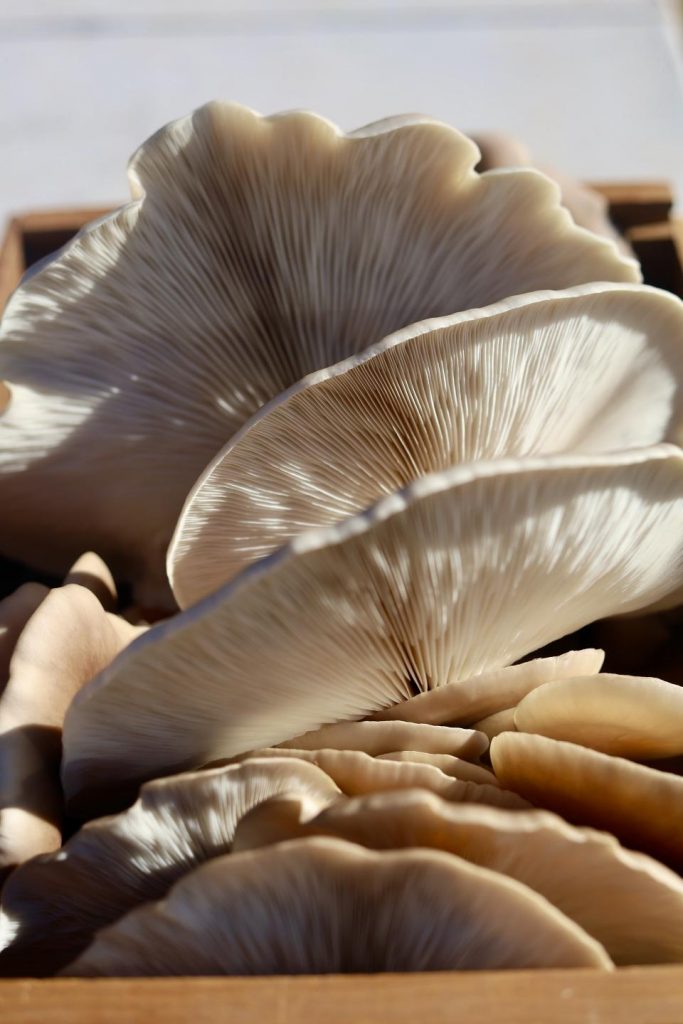Oyster mushrooms are a flavourful and nutritious fungus cultivated for their high nutritional value and excellent taste, making them an appealing choice for mushroom growers. Let's cultivate oyster mushrooms indoors with simple kitchen waste in this quick guide.
The generic name for this species is "Flat Mushroom," and are found nearly everywhere in the world, with the exception of Antarctica. Oyster mushrooms develop on dead wood, trees but occasionally fallen branches, as they require a humid atmosphere with plenty of decaying organic matter.
The oyster mushroom has been cultivated for almost two centuries, with the greatest exporters being China, France, and Thailand.
Oyster mushrooms adapt to a wide variety of conditions, and although some species prefer warmer temperatures, they can be cultivated in colder regions by adjusting the temperatures. When grown indoors, the culture of more tropical species such as the pink oyster should be maintained at around 20°C using electric heat mats or heaters to ensure this is achieved.

STEP 1:
What you'll need
- A large container with a lid.
- Plastic bottle with the top cut off or similar sized airtight container that can hold at least 10 Litres of water.
- Potting soil
- Oyster mushroom spawn: You may make your own, or expand from existing spawn you've purchased.
- A spray bottle filled with water
STEP 2:
Container and Substrate
To begin, clean your container with a 10% bleach solution and let it dry fully. After the container is clean, fill it halfway with your substrate. You can use an orchid potting mix or other substrates such as dry leaves and grass clippings, sawdust and woodchips, straw and hay, and finished compost. Don't use any substrate that has been treated with fungicides as they may harm the mycelium.
STEP 3:
Adding the Culture or Spawning
After 10 days, you will observe a white misty substance sprouting through your substrate, known as the 'mycelium.' This is the mushroom's root system, which consumes the food in order to turn into mushrooms.
The mycelium requires water and (carbon dioxide) nutrients for healthy development as it grows. Your Oysters' needs are very similar to plants, so the water supplied through misting or heavy watering is great.
Spawning may be done by inserting the mycelium into an outdoor compost or substrate, but as described, it is difficult and time-consuming. It's usually easier to obtain Oyster mushroom spawn from a friend or purchase them online. You will need small amounts of spawn, so using a whole bag may
Your Oyster mushroom culture will last for approximately 6 weeks, so it's very important you remove any uncolonized substrate (uncolonized substrate is a substrate that hasn't been broken down by your mushroom mycelium)as it may cause problems later on.
STEP 4:
Harvesting
After approximately 2-3 weeks you will start to see the first Oyster mushrooms poking their way through the substrate, and they should appear every 3-5 days after this point.
When harvesting your Oysters, just twist and pull them out of the substrate as gently as possible. It's a good idea to wear gloves and wash your hands afterward, simply because it's more hygienic and you won't get any dirt or germs on the mushrooms.
You can store your Oyster mushrooms in a plastic bag in the fridge, where they will last for about a week.
Final thoughts - will you be growing oysters in your garden?
Growing Oyster mushrooms is simple but it does require some patience. Remember that only 10% of the substrate will produce, so making more spawn bags may be a good idea if you want to scale up this process.
If you follow these steps, you should end up with an ongoing supply of delicious Oyster mushrooms that can be used in salads, stir-fries or even baked until crispy in the oven.
Whilst growing oysters outdoors can be a bit more risky due to external factors out of your control, it can be a low-tech very budget friendly way to grow mushrooms. So - why not give it a try!
Please share your experiences in the comments below!


Nice write up Matt, I will have to give this one a try. It's not a problem for me getting hold of straw over here in the US.
I'm just filled with excitement about idea of growing one of my life long curiosities mishrooms and fungus! Matt, I am so glad to have found your site! I'm going to try oyster first! Big love and positive energy XXX Emma 💖😁